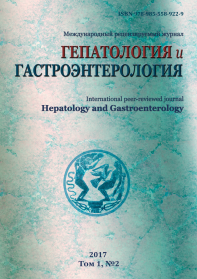ROLE OF INTEGRATED INSTRUMENTAL STUDY IN DIAGNOSTICS OF LIVER PELIOSIS
Abstract
Background. Liver peliosis is a rare benign and tumor-like lesion of the liver.
Objective – to present a clinical case of liver pelitis and the possibility of complex instrumental diagnosis of focal liver damage.
Materials and methods. A clinical case of diagnosis of liver pelitis with ultrasound (ultrasound), computed tomography, biopsy and diagnostic laparoscopy is presented.
Results. Qualified ultrasound research using auxiliary diagnostic methods (ultrasound dopplerography, elastography) enabled to interpret data of the study correctly and to assume liver peliosis in the patient. Conclusion. Complex instrumental study in the diagnosis of focal liver lesions with the use of ultrasound, computed tomography, biopsy and diagnostic laparoscopy is a reliable, affordable and low-cost method for diagnosing liver pelitis.
References
1. Charatcharoenwitthaya P, Tanwandee T. Education and imaging: hepatobiliary and pancreatic: spontaneous intrahepatic hemorrhage from peliosis hepatis: an uncommon complication of a rare liver disorder. J. Gastroenterol. Hepatol. 2014;29:1754.
2. Hidaka H, Ohbu M, Nakazawa T, Matsumoto Т, Shibuya А, Koizumi W. Peliosis hepatis disseminated rapidly throughout the liver in a patient with prostate cancer: a case report. J. Med. Case Rep. 2015;9:194.
3. Chopra S, Edelstein A, Koff RS, Zimelman AP, Lacson A, Neiman RS. Peliosis hepatis in hematologic. JAMA. 1978;240:1153-1155.
4. Fidelman N, LaBerge JM, Kerlan RK. SCVIR 2002 Film Panel Case 4: Massive intraperitoneal hemorrhage caused by peliosis hepatis. J. Vasc. Interv. Radiol. 2002;13:542-545.


















1.png)






